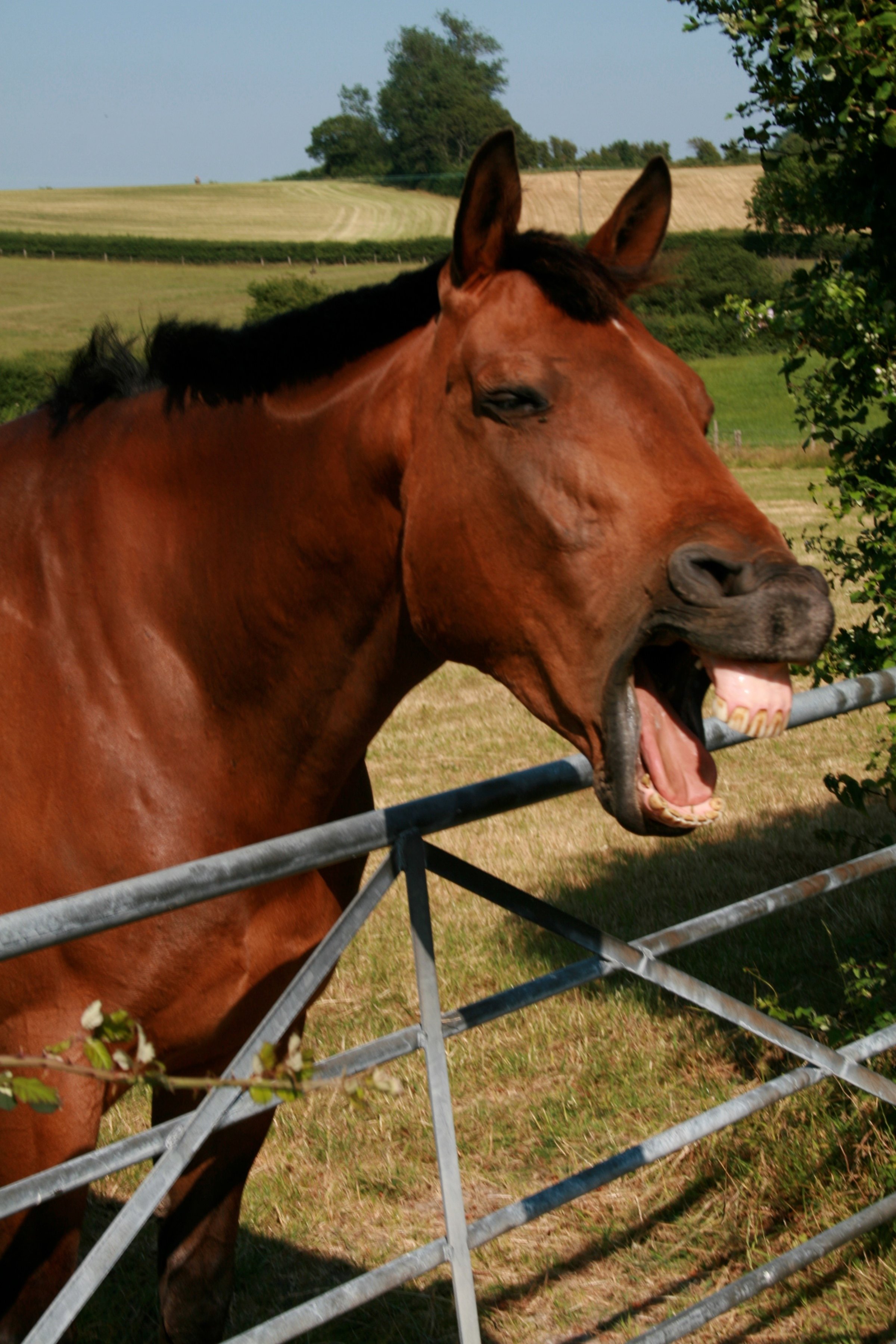
Horse faces share some surprising similarities to human faces, shows a curious new study published in the journal PLOS ONE.
After dissecting a horse head, analyzing its musculature, and scrutinizing 15 hours of horse video footage, a group of researchers managed to map out every possible facial expression a horse could make. It turns out our faces are a lot more similar than we think.
“Horses and humans are distantly related and have such differently shaped faces that I personally thought there would be really no similarities,” says study author Jennifer Wathan, a PhD candidate in social cognition and communication in horses at the University of Sussex in the U.K. “But there was a surprising amount of similarities.”
For the first time, Wathan and her colleagues created a full map of a horse face using a technique called the Facial Action Coding Systems (FACS). It’s a tool for objectively measuring facial movement, without letting subjective interpretations of facial expressions get in the way.
Humans have a FACS (we make 27 separate facial movements), and so do chimpanzees (they make 13) and dogs (16 for them). But horses had even more: 17 facial movements in total. “Most people who have horses know they are expressive and use their ears a lot, but I’ve got to admit, I was really surprised by the extent to which they use their face,” Wathan says. “They’ve got a huge facial repertoire.”
It’s not yet clear why there are similarities between humans and horses. “Whether animals communicate intentionally is still a huge and fairly contested issue,” she says. But three of our shared expressions particularly captivated Wathan. “One is raising the inner eyebrows,” she says—something humans do when we’re scared, surprised or sad. “You know, puppy-dog eyes,”she says. (Dogs really do this, by the way: one study of shelter dogs, by Bridget Waller and Juliane Kaminski at the University of Portsmouth, found that dogs who raised their brows were adopted faster than dogs who didn’t. You can see what it looks like by watching this video that the researchers made to go with their study:)
“They think that’s potentially because it enhances the proportions of the dog’s face to make them look more like human babies,” Wathan says. “It taps into our sensory biases to provide care for human babies.” Horses also do this expression, she says, “and it seems that they do it in negative emotional situations, too.”
Humans also pull the corners of their lips back—also known as smiling—sort of like horses do. “It seems to be part of the submissive gesture,” she says, and younger horses tend to do it to older horses.
Finally, both humans and horses widen their eyes in fear.
Findings like these can help us understand the evolution of complex communication between species—and they may suggest that using complex facial expressions to communicate is an ancient ability we shared with our last common ancestor with horses, or that the ability has evolved under the social pressure to communicate with important social partners, Wathan says.” Horses, like us, have a rich social life where effective communication would be to their advantage, she says.
“The ability to use complex facial expressions was one of these things that was kind of touted as being uniquely human,” Wathan says. “But other species are doing it, and we share these abilities with all the other species around us.”
More Must-Reads From TIME
- The 100 Most Influential People of 2024
- Coco Gauff Is Playing for Herself Now
- Scenes From Pro-Palestinian Encampments Across U.S. Universities
- 6 Compliments That Land Every Time
- If You're Dating Right Now , You're Brave: Column
- The AI That Could Heal a Divided Internet
- Fallout Is a Brilliant Model for the Future of Video Game Adaptations
- Want Weekly Recs on What to Watch, Read, and More? Sign Up for Worth Your Time
Write to Mandy Oaklander at mandy.oaklander@time.com